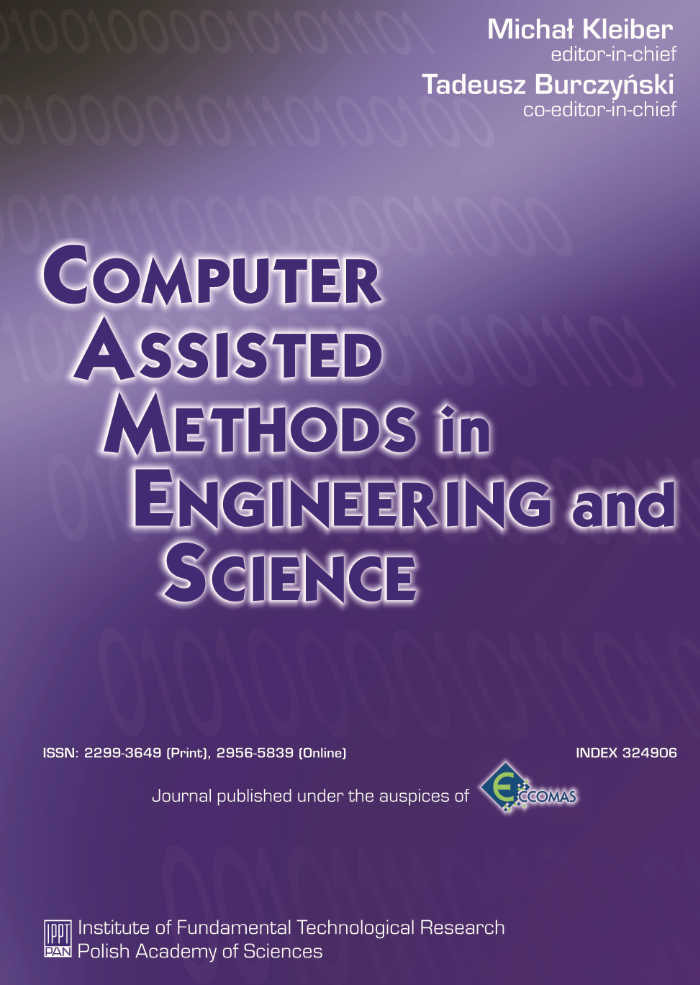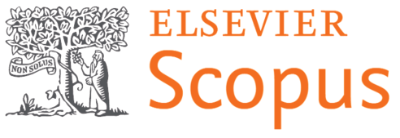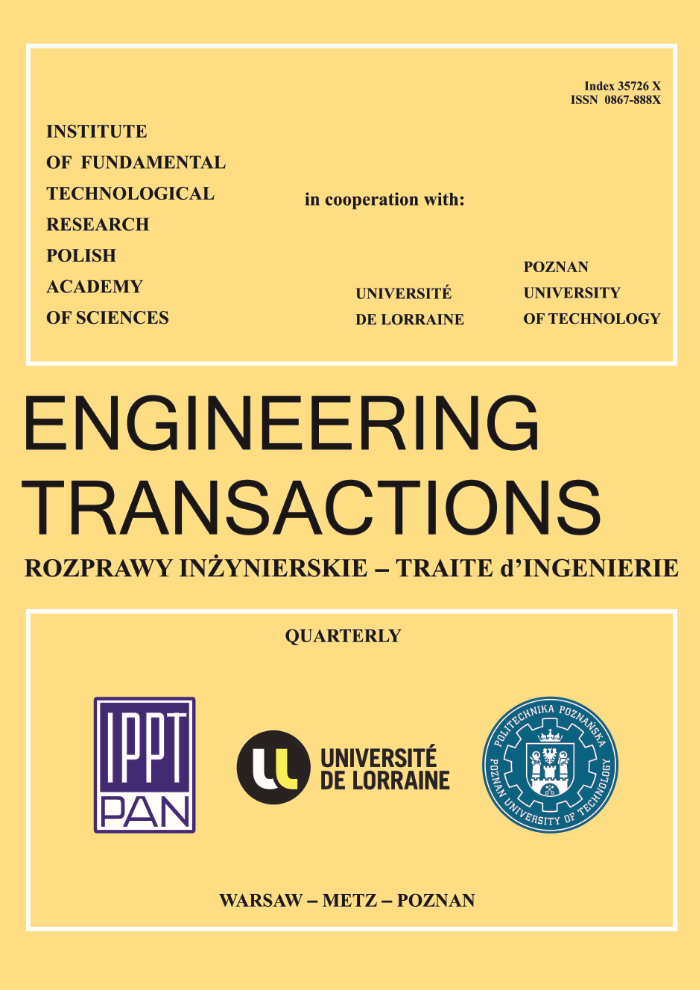Information For Authors
Interested in submitting to this journal? We recommend that you review the About the Journal page for the journal's section policies.
Authors need to register with the journal prior to submitting or, if already registered, can simply log in and begin the five-step process.
Author Guidelines
Since the Editorial Board does not charge for the publication of articles, we require authors to strictly follow the guidelines given below. Please make every effort to prepare your manuscript so that it is legible. Articles that do not meet formal requirements may be rejected at the initial stage (desk rejection) and will not be sent for review.
Please respect the time and work of others.
Submission of manuscripts. Submission of a manuscript for publication in CAMES implies that the paper is original and is not being submitted for publication elsewhere; that permission for publication, if needed, has been granted by appropriate sources; and that the first author ensures that other authors have approved the paper for publication. Manuscripts should be submitted online in the PDF format. All further correspondence and proofs will be sent to the first author, unless indicated otherwise by the authors. The submitted manuscript should be accompanied (in the Comments for the Editor box or in a seperate file) by a short cover letter containing the following information:
- why the paper is submitted to Computer Assisted Methods in Engineering and Science,
- the highlights, which consist of a short collection of bullet points (3-5) that capture the novel results of your research and the new methods that were used during the study (if any).
Style of manuscript. The language of the journal is English. The text should be set up in a single column style and divided into numbered and titled sections and, if needed, subsections and sub-subsections. SI units are mandatory.
Mathematical formulas referred to in the text must be consecutively numbered, with Arabic numerals in parentheses ( ); numbering of other formulas is not obligatory though advisable. Publications cited in the paper should be referred to in the text by Arabic numerals in brackets [ ] and listed at the end of the manuscript in alphabetical or apperance order. Each item should contain full bibliographical data in the following format:
- 1. W.S. Hemp, Theory of Structural Design, NATO Studies, Report No. 214, Paris, 1958.
2. A.G.M. Michell, The limits of economy of material in frames structures, Philosophical Magazine, 8: 589–597, 1904, https://doi.org/10.1080/14786440409463229.
3. J.C. Maxwell, On reciprocal figures, frames, and diagrams of forces, Transactions of the Royal Society of Edinburgh, 26(1): 1–40, 1870. - 4. R.T. Shield, Optimum design of structures through variational principles, [in:] Proceedings of Optimization and Stability Problems in Continuum Mechanics, P.K.C. Wang [Ed.], Springer-Verlag, Berlin, Heidelberg, New York, pp. 13–37, 1973, https://doi.org/10.1007/3-540-06214-9_2.
- 5. R.H. Gallagher, O.C. Zienkiewicz [Eds.], Optimum Structural Design: Theory and Applications, Wiley, New York, 1973.
Title page. The title page should contain the title, authors' names and affiliations, abstract and keywords. The title should be as brief as possible. If its length exceeds 50 characters, a shortened running head should be proposed. The authors' affiliations should contain full names and addresses of all the authors, possibly with an indication to whom all further correspondence, proofs and offprints should be sent (if other than the first author). The abstract should be 150-200 words long. Keywords should be given below the abstract.
Figures and tables. For the review process, tables and figures should be incorporated in the manuscript. Figures in the submitted paper should already be of the final quality suitable for printing. The provided figures should be original drawings or printouts (no photocopies); glossy photographs of very good contrast are also acceptable. Exceptionally, colour figures or photographs will be accepted, provided the colour is essential for the exposition.
After acceptance for publication
Manuscript. Upon acceptance of the paper, authors are asked to provide via e-mail (cames@ippt.pan.pl) the electronic source file (MS Word or LaTeX) of the final version of the paper along with the original source files of figures (drawings/diagrams/graphs or photographs). The TeX standard or its extensions (e.g., LaTeX) are preferable. A LaTeX template file is available below. Authors are also asked to attach a PDF of the final version of the manuscript.
Figures files should be of sufficient resolution (no lower than 300 dpi) to ensure high quality and legibility of the printout and should be prepared as follows:
- In the case of diagrams and graphs, the use of square brackets is required for unit descriptions in axis. The descriptions of the axes should be written in Times New Roman font (no boldfaced type) and its size adjusted proportionally. Mathematical symbols in the figures should be in italic if they correspond to such symbols used in the text.
- For diagrams and graphs vector EPS or vector PDF files are the most useful (EPS stands for Encapsulated PostScript). Most drawing and graphing packages (e.g. Mathematica, Adobe Illustrator, Corel Draw, MATLAB) allow the user to save files in one of these formats. Make sure that what you are saving is vector graphics and not a bitmap. Please also include the original data for any of the plots. This is particularly important if you it is impossible to save Excel-generated plots in vector format. Saving them as bitmaps is not useful; please send the Excel (.xls) spreadsheets instead.
- Photographs must be of high-quality – with resolution no lower than 300 dpi.
- Each figure should be saved in separate file and named appropriately.
- Pack all figure files and text file into a single archive (zip, tar, rar or other format) and then upload on the journal system or send by e-mail to cames@ippt.pan.pl.
LaTeX template file
LaTeX users are encouraged to make use of the file cames0.sty. It contains a number of definitions that can be helpful in making the manuscript best fit requirements of the Editorial Office as well as the final page layout of the Journal. To employ the definitions, please, download the file and write the following declarations in your source file:
- - in LaTeX 2.09:
- \documentstyle[11pt,cames0]{article}
\begin{document}\sloppy
% the text of the paper in LaTeX
\end{document} - - in LaTeX 2e:
- \documentclass[11pt,a4paper]{article}
\usepackage{cames0}
\begin{document}\sloppy
% the text of the paper in LaTeX
\end{document}
Please, note that the definitions provided with cames0.sty do not allow to form the Journal's specific title page layout or running page headers, but these features are not important at the stage of manuscript pereparation.










